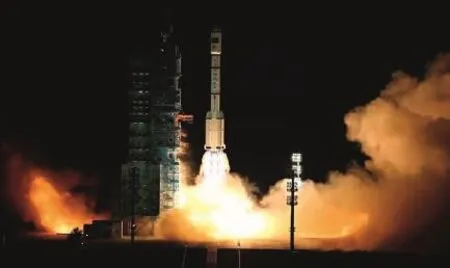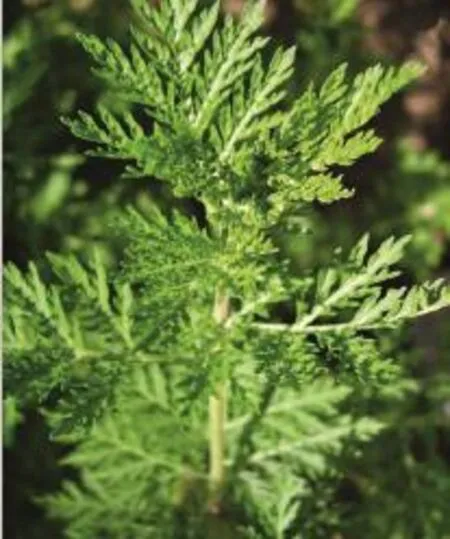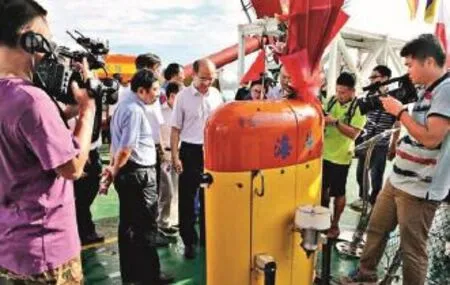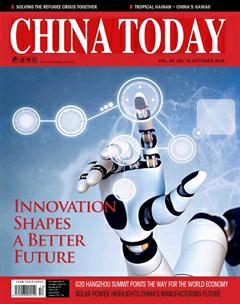Sci-Tech
Sci-Tech

Nobel Laureate Tu Youyou’s Team Makes New Progress in Artemisinin Research
Nobel laureate Tu Youyou’s team has made new progress in research into the antimalarial drug artemisinin, a team member said on September 5.
Researcher on Tu’s team Liao Fulong said at the third Traditional Chinese Medicine (TCM) Science Meeting in Guangdong Province that they had isolated other antimalarial components in sweet wormwood besides artemisinin. The finding may provide new treatment for malaria, Liao said.
Tu Youyou’s team also found a component in artemisinin that could improve its bioavailability.
Tu’s team is now working on using artemisinin compounds to treat other diseases,such as lupus.
Artemisinin is expected to be applied to different areas such as anti-viral, immunosuppression, antineoplastic and anti-mold,Liao said.

China’s Space Lab Tiangong-2 Blasts off
Tiangong-2 blasted off on September 15 beneath the mid-autumn full moon from the Jiuquan Satellite Launch Center on the back of the Long March-2F rocket,leaving in its wake a jet of flame and clouds of smoke.
Once it reaches outer space, the 8.6-tonne Tiangong-2 will maneuver itself into an orbit about 380 km above Earth for initial on-orbit tests, Wu Ping,deputy director of China’s manned space engineering office, said the day before the launch.
The space lab will then transfer to a slightly higher orbit of around 393 km above Earth, the height at which the future Chinese space station will be operating,until the Shenzhou-11 manned spaceship ferries two male astronauts into space to dock with the lab. The two astronauts will work in the lab for 30 days before reentering Earth’s atmosphere.
In April 2017, China’s first cargo space ship, Tianzhou-1, literally “heavenly vessel,” will also be sent into orbit to dock with the space lab and provide it with fuel and other supplies.
Experts will verify and evaluate the key technologies needed for on-orbit propellant resupply and equipment repairs,as well as those related to the astronauts’long-term stay in space that the mission entails, Wu said.
They will also use the lab, designed to operate for at least two years, to conduct space science experiments on a relatively larger scale than before.
China’s manned space program has now entered a “new phase of application and development,” Wu said.
64-core CPU
Phytium Technology Co., Ltd., a Chinese integrated circuit (IC)design firm, recently unveiled at a technology event in Silicon Valley its latest product - a 64-core central processing unit (CPU), and a related prototype computer server.
The company, based in Tianjin, claims that its FT-2000/64 CPU,with 4.8 billion transistors on a die 25.38 millimeters in width and 25.2 millimeters in length within a chip package 55 millimeters in width and 55 millimeters in length, is the first of its kind. An engineer from Phytium said that the new CPU chip, with 64-bit arithmetic compatible with ARMv8 instructions, is able to perform 512 billion floating-point operations per second (FLOPS) at a base frequency of 2.0 GHz and on 100 watts of power dissipation. Phytium says the FT-2000/64 is the best so far in the ARM category.
One of China’s major CPU developers, Phytium’s previous CPU series integrated either 4 or 16 cores.
400,000
The municipal
government of
Beijing plans to
put 400,000 electric cars on the
road by 2020.
New Deep Sea Diving Record
The Chinese Academy of Sciences(CAS) announced on August 23 that China’s unmanned submersible had dived to a depth of 10,767 meters, setting a new national deep sea diving record.
“Haidou-1” achieved this feat at the Mariana Trench in the West Pacific, the earth’s deepest spot, during a scientific expedition from June 22 to August 12.
The submersible dived once to a depth of more than 8,000 meters and twice each to depths of 9,000 meters and 10,000 meters. This makes China the third country after Japan and the United States to build a submersible capable of diving deeper than 10,000 meters.
“It is another milestone along our maritime science journey after the Jiaolong manned submersible,” CAS scientist and head of the expedition Liu Xincheng said.
During the expedition, scientists collected more than 2,000 biological samples, including some unidentified species, from depths of 5,000 meters to 10,000 meters.


